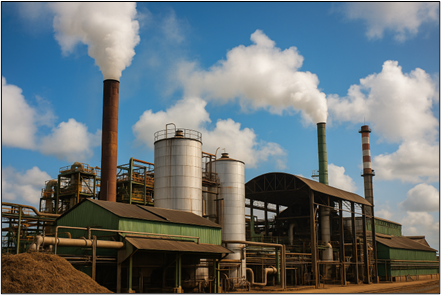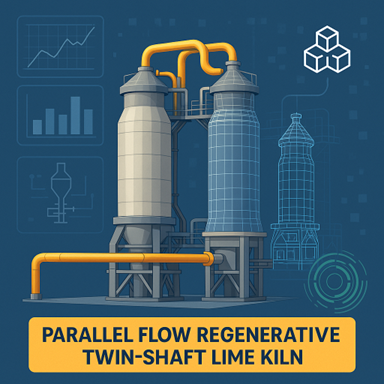Genetic Algorithms for MPC: Tuning Emissivity, PID, and Time-Series Models in Industrial Furnaces

Introduction
Optimization is a core component of Model Predictive Control (MPC), and one of the most robust optimization techniques is the Genetic Algorithm (GA)—an evolutionary approach inspired by natural selection. This article explores how GAs are employed to optimize emissivity parameters in radiation models for annealing furnaces, enabling accurate strip temperature control. Their adaptability, simplicity, and robustness make GAs valuable not only in furnace control but also in tuning time series models (e.g., ARIMA) and PID controllers.
Genetic Algorithms and Their Versatility
Genetic Algorithms mimic biological evolution, where offspring inherit the most advantageous traits (genes) from their parents. GAs fall under the broader class of Evolutionary Algorithms (EAs) and apply key techniques such as:
- Selection – Choosing the best-performing individuals
- Crossover – Combining traits from parent solutions
- Mutation – Introducing random changes to promote diversity
This evolutionary approach makes GAs highly effective for solving nonlinear and multivariable optimization problems.
- Typical GA Workflow:
- Initialization: Randomly generate a population of candidate solutions (chromosomes).
- Evaluation: Score each candidate using a fitness function (e.g., prediction error).
- Selection: Choose the best-performing candidates.
- Crossover: Create new candidates by combining selected pairs.
- Mutation: Apply random changes to maintain solution diversity.
- Iteration: Repeat for several generations or until convergence.
- Advantages of GA:
- Resilient to local minima
- Effective in complex or discontinuous search spaces
- Requires minimal assumptions about the objective function
- Challenges:
- Results may vary due to randomness
- Parameter tuning (e.g., population size, mutation rate) can be tricky
- May be slower than gradient-based methods for simpler problems
Annealing Furnace Control Using MPC
In cold rolling mills, annealing furnaces relieve stress and homogenize grain structures in steel strips. These strips are continuously welded and passed through radiant tube furnaces to reach the target annealing temperature, followed by a soaking phase. Precise temperature prediction relies on accurate emissivity values.
Proper furnace control improves product quality and saves fuel. With evolving control strategies, annealing furnaces now incorporate Advanced Process Control (APC) and Model Predictive Control (MPC).
A typical MPC framework includes:
- Model – Predicts system behaviour (e.g., radiative heat transfer)
- Observer – Estimates unmeasured internal states
- Optimizer – Computes control actions that minimize a cost function
Using Genetic Algorithms to Tune Emissivity in Radiation Models:
The radiation model for temperature prediction is:
Where:
‘f’ and ‘i’ are space indices whereas k is time index
- Tf,i: Strip temperature
- Tu: Tube temperature
- ε: Emissivity (subject to tuning)
- σ: Stefan-Boltzmann constant
- A: Surface area
- m: Mass of coil
- cp: Specific heat
Emissivity (ε) depends on strip chemistry and surface conditions, and is not constant. GA is used to minimize the prediction error:
J = (Ttarget - Tpredicted)²
GA-Based Tuning Process:
- Initialization: Generate 100 random emissivity values (e.g., between 0.2 and 0.8).
- Objective Function: Minimize the squared error between target and predicted temperatures.
- Selection & Crossover: Select top candidates, combine values, apply mutation.
- Iteration: Continue until convergence or maximum generations are reached.
-3.png?width=752&height=452&name=image%20(12)-3.png)
Fig: Sample Strip Temperature vs Emissivity
Using GA for PID Controller Tuning
PID controllers require careful tuning of the proportional (Kp), integral (Ki), and derivative (Kd) gains to meet control performance objectives. Traditional methods (e.g., Ziegler-Nichols) often fall short for nonlinear or noisy systems.
Genetic Algorithm can optimize these parameters by defining an objective function (e.g., minimize IAE or overshoot) and using evolutionary processes to search the parameter space.
- GA Approach:
- Define a cost function like Integral of Absolute Error (IAE):
J = ∫ |e(t)| dt
- Where e(t) is the error between the setpoint and actual output. GA searches the parameter space to find (Kp, Ki, Kd) that minimizes the cost.
Benefits:
- Handles nonlinearities
- More robust to disturbances
- Avoids manual trial-and-error
GA for ARIMA/ARMA Parameter Optimization
In time-series forecasting, the ARIMA (AutoRegressive Integrated Moving Average) model requires specification of parameters (p, d, q). Selecting these manually can be inefficient.
Using GA:
- Define a fitness function such as Mean Squared Error (MSE) or Akaike Information Criterion (AIC):
Fitness=MSE (actual, predicted)
- GA searches combinations of (p, d, q) to minimize forecasting error on validation data.
This automates the model selection process and improves prediction accuracy.
Conclusion
Genetic Algorithms offer a versatile and efficient method for optimization in control systems, time-series forecasting, and industrial furnace operations. Their ability to avoid local minima and adapt to complex search spaces makes them ideal for Model Predictive Control and real-time decision-making. As AI and data science advance, GA will continue to be a key enabler of smart manufacturing.
References
- “Genetic Algorithms in Search, Optimization and Machine Learning”, Goldberg D.E., (1989), Addison-Wesley Longman Publishing Co., Inc.
- “Model-based control and optimization of continuous strip annealing furnaces”, Martin F., Michael B-S., Stephan S., martin N., Andreas S., & Andreas K., (2016) Heat Processing.
- “PID Parameters Optimization by Using Genetic Algorithm”, Andri M., Shinichiro Y., & Masashi F.
- “Time Series Analysis: Forecasting and Control”, Box, G.E.P., Jenkins, G.M., Reinsel, G.C., & Ljung, G.M., (2015) Mathematics
Domain-Wise PlantGPT
It is built around purpose-designed micro-agents that collaborate to provide real-time conversational assistance, decision support, and advisory insights tailored to daily plant operations.
Book a Demo →Dx. Consulting Services
Our strength lies in the fusion of deep consulting experience, process domain expertise, and digital execution excellence. This rare combination enables us to go beyond traditional digital transformation.
Book a Meeting →Agentic AI Services
Knowledge Graph as a Service (KGaaS) is a scalable, agent-driven platform that transforms siloed, unstructured, and structured industrial data into a semantically connected, intelligent knowledge network. Built on industry standards and ontologies, the platform enables next-gen applications in root cause analysis, process optimization, SOP automation, and decision augmentation.
Book a Meeting →FAQs
Can GA replace all PID tuning methods?
No, but it performs better in complex, nonlinear environments where classical tuning is inadequate.
How is GA better than grid search for ARIMA?
GA avoids exhaustive enumeration and finds good solutions faster by focusing on promising regions.
Is emissivity tuning required frequently?
Yes, due to changing strip chemistry and surface conditions.
How many generations are ideal in GA?
Typically, 50–100 generations give good results, but it depends on the complexity and constraints.
Is GA suitable for real-time optimization?
Yes, especially with early stopping and population size control
Related Blogs

Smarter OEE: Unlocking Pharma Efficiency with Agentic AI

Forecasting Failures: Smart Maintenance of Falling Film Evaporators in the Sugar Manufacturing industry


